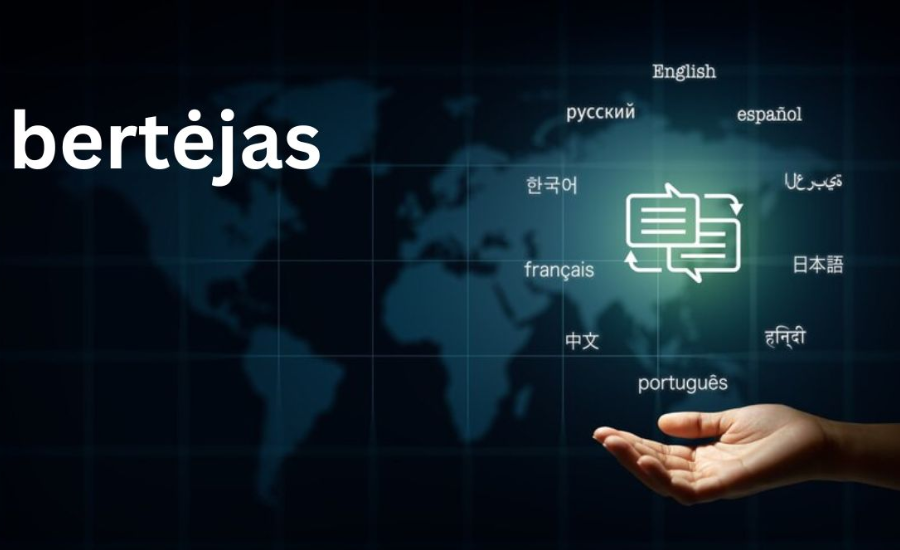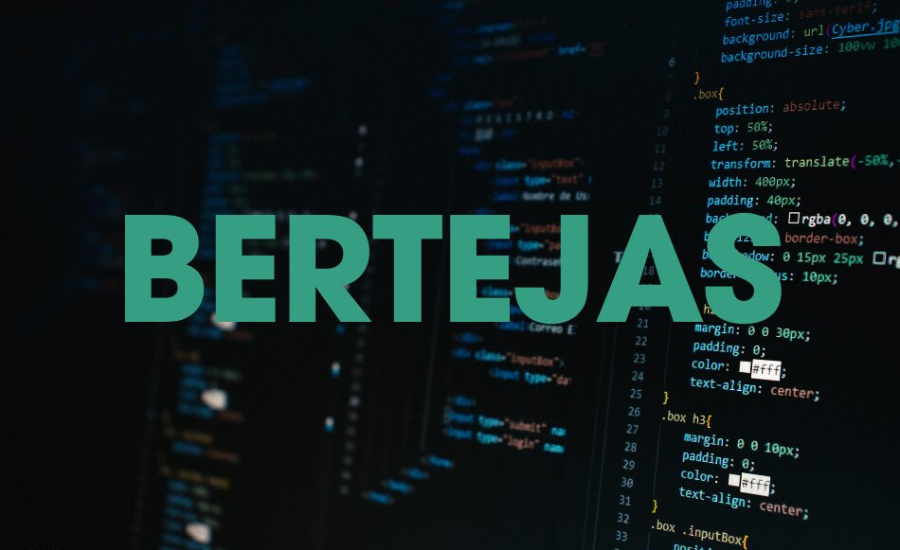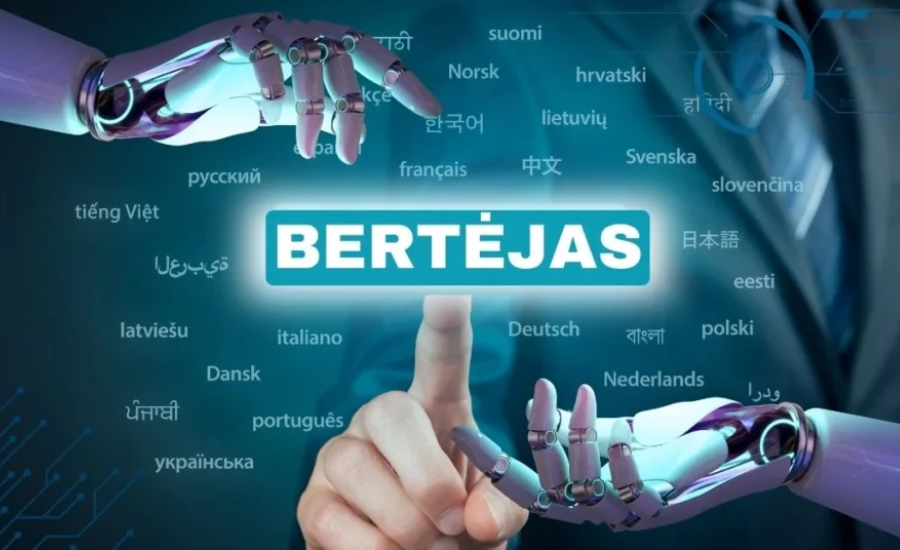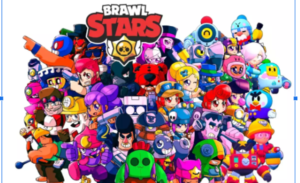Bertėjas: Transforming Language Translation Through Cutting-Edge AI And Machine Learning

Bertėjas has emerged as a transformative force in the realm of Natural Language Processing (NLP), significantly impacting the global landscape of language technology. This cutting-edge approach to language interpretation has captivated linguists, developers, and researchers alike. In this in-depth SEO-optimized article, we will explore the origins of Bertėjas, its transformative effect on NLP, and its potential future developments.
Origin And Evolution Of Bertėjas
Introduction to Bertėjas: A Revolutionary Language Translation System
Bertėjas, named after the Lithuanian term for “translator,” marks a groundbreaking development in automated language translation. In today’s globalized environment, overcoming language barriers remains a major challenge.
Bertėjas addresses this issue by merging machine learning (ML) and artificial intelligence (AI) to enhance the accuracy and efficiency of language translation.
Historical Development and Refinements
The development of Bertėjas is rooted in the progression of translation technology and advancements in AI and ML. The tool’s evolution reflects ongoing improvements and refinements from its initial concept. Early limitations of traditional translation methods prompted experts to innovate, leading to the creation of Bertėjas as a more sophisticated solution.
Technical Excellence: An In-Depth Look
Bertėjas stands out due to its advanced technical capabilities. It employs sophisticated AI algorithms and models to deliver superior translation results. Continuous testing and development, along with extensive training on diverse multilingual datasets, enable it to handle complex nuances and informal language. Bertėjas represents a significant leap forward in natural language processing (NLP), transcending the typical functionality of standard translation tools.
Key Functions And Features of Bertėjas

Bertėjas stands out as an advanced AI-driven translation tool, leveraging neural machine translation (NMT) to deliver high-quality language translations in real time. By harnessing extensive datasets and sophisticated deep learning methods, Bertėjas achieves near-human-level translation accuracy across multiple languages.
Operational Mechanics: Bertėjas employs a method known as self-supervised learning, where it autonomously improves its translation capabilities by analyzing vast amounts of human-generated translation examples. This approach allows the model to learn and adapt without direct programming.
The system is structured around three core components: the encoder, the attention mechanism, and the decoder. The encoder processes the input sentence and converts it into a fixed-length vector, which encapsulates its meaning. The decoder subsequently employs this vector to produce the translated output.
The attention mechanism enhances the model’s performance by focusing on the most relevant parts of the input sentence during translation.
Effectiveness: Bertėjas represents a significant breakthrough in natural language processing, transforming how language translation is approached and utilized. Its ability to handle a wide range of linguistic tasks with precision makes it a versatile and valuable tool. Ongoing research and development are set to further enhance Bertėjas’s capabilities, promising to push the boundaries of NLP and improve global communication and understanding in our increasingly interconnected world.
How Bertėjas Functions?
Bertėjas leverages BERT (Bidirectional Encoder Representations from Transformers), a pioneering technique in Natural Language Processing (NLP). BERT’s innovation lies in its ability to analyze the context of every word within a sentence by considering all surrounding words. This contextual understanding enables Bertėjas to produce more accurate translations that faithfully represent the original text’s intent.
When Bertėjas processes a sentence, it scrutinizes each word within its context, allowing for a nuanced grasp of linguistic subtleties. This results in translations that maintain the meaning and structure of the source text, something traditional translation models often struggle to achieve.
Beyond its technical capabilities, Bertėjas benefits from extensive training on large, diverse datasets. These datasets provide the AI with exposure to the myriad complexities of language, enhancing its ability to translate across various fields and subjects effectively.
The Evolution And Growth Of Bertėjas
The development of Bertėjas is a compelling journey that highlights the evolution and advancements in language processing. This innovative tool reflects the dedication and expertise of a skilled team of professionals, who have driven its progress through continuous research and development.
Initially, the challenge was to address the inefficiencies and inaccuracies of traditional translation methods. This led to the creation of Bertėjas, a sophisticated language comprehension tool that leverages advanced learning models to enhance translation quality.
Over time, Bertėjas has undergone extensive testing and refinement, training on vast multilingual datasets to grasp contextual nuances, idiomatic expressions, and dialectal variations. This iterative process involved complex algorithms designed to analyze language patterns and refine translations for greater accuracy.
A major breakthrough in its development was the incorporation of BERT (Bidirectional Encoder Representations from Transformers). This advancement significantly improved Bertėjas’s ability to understand sentence structures and meanings, enabling it to generate translations that are both precise and natural-sounding.
Why Bertėjas Matters?

In today’s globalized economy and digital age, the demand for precise and efficient translation services is higher than ever. Bertėjas offers a significant edge over traditional translation tools by handling intricate sentences, preserving contextual meaning, and reducing ambiguities. This capability is especially critical in international business, where accurate translations can influence crucial deals, and in healthcare, where miscommunication could have serious consequences.
Unlike conventional professional translation services, which can be costly and slow, Bertėjas delivers rapid, high-quality translations that closely resemble human output. This efficiency and cost-effectiveness make Bertėjas a transformative solution for overcoming language barriers in real-time communication.
Opportunities And Possibilities For Bertėjas
Revolutionizing Cultural Events: As Bertėjas evolves, it promises to bring innovative approaches to celebrating traditional events. For instance, technology could enable global participation in cultural festivals like the Baltic solstice, offering immersive experiences through virtual reality that connect people worldwide with rich, cultural traditions.
Enhancements in AI-Driven Translation: The future of Bertėjas AI holds exciting potential, particularly in refining real-time translation accuracy. Emerging technologies such as sentiment analysis and advanced context understanding could allow Bertėjas to convey not only words but also the underlying emotions and cultural nuances, improving communication across diverse contexts.
Advancing Global Education: Bertėjas could become an essential tool in international education, extending beyond its current use in personal and business communications. By providing high-quality translations of educational materials in multiple languages, Bertėjas could significantly enhance learning opportunities and research capabilities across different cultures and academic fields
How Bertėjas Can Benefit Your Business?
Bertėjas is more than just a cutting-edge AI tool; it’s a transformative asset for businesses aiming to grow internationally, enhance multilingual support, and elevate customer experiences. Here’s how Bertėjas can make a difference for your business:
Optimized Global Marketing: Bertėjas enables the customization of marketing messages for diverse local markets, ensuring your content is culturally relevant and engaging across various regions.
Streamlined Cross-Border Communication: Bertėjas facilitates smooth communication in operations, customer service, and partnerships by overcoming language barriers, promoting effective collaboration and interactions.
Boosting Global E-commerce: By integrating Bertėjas, you can present your products and services in multiple languages, broadening your market reach and tapping into global business opportunities.
Enhancing Multicultural Work Environments: Bertėjas supports internal communications, fostering an inclusive workplace that embraces diverse cultural perspectives and drives innovation.
Real-World Applications Of Bertėjas

Bertėjas’s impact extends beyond theory, showing practical benefits in various sectors:
E-commerce Giants: Large online retailers use Bertėjas to translate product descriptions, customer reviews, and support tickets in real-time, ensuring a seamless shopping experience for users around the world.
Global Conferences and Events: Companies hosting international events rely on Bertėjas to offer live multilingual support, allowing attendees to engage fully regardless of their native language.
Healthcare Advancements: In healthcare, Bertėjas aids in translating vital medical documents, prescription instructions, and practitioner-patient communications, bridging language gaps to improve patient care.
Who Can Benefit From Bertėjas?
Bertėjas offers extensive benefits across various sectors due to its adaptable applications. Here’s how different types of organizations can leverage its capabilities:
Startups and Small Enterprises: Emerging businesses looking to broaden their market presence can use Bertėjas to provide multilingual support affordably, enhancing customer interactions and product accessibility.
Non-Profit Organizations: Non-profits can leverage Bertėjas to effectively convey their missions and engage with diverse populations, reducing the need for costly translation services.
Government Bodies and Public Services: Bertėjas facilitates smoother interactions and paperwork processing for immigrants and international partners, making it a valuable tool for government agencies and public service organizations.
Educational Institutions: Schools and universities can utilize Bertėjas to deliver course materials and communicate with students in their native languages, improving the educational experience for a global audience.
Limitations Of Bertėjas
a. Accuracy in Complex Translations:
Although Bertėjas excels in translating everyday conversations with remarkable precision, it may face difficulties with highly specialized or technical terminology. This limitation means that users need to exercise extra caution when translating documents that involve niche or domain-specific knowledge. For instance, legal or scientific texts may require additional verification or human oversight to ensure that the technical language is accurately conveyed.
b. Handling Linguistic Nuances:
Bertėjas can struggle with capturing the full complexity of linguistic nuances. This includes the ability to interpret cultural contexts and idiomatic expressions that vary significantly across languages. Such subtleties are crucial for accurate translation but can often be overlooked by automated systems. For translations that involve culturally significant phrases or regional dialects, it is essential to consider these limitations and, when possible, seek human expertise to achieve the desired level of accuracy.
c. Data Privacy and Security Concerns:
As with any AI-driven system, Bertėjas relies on vast amounts of training data to function effectively. This dependency raises concerns about data privacy and security. Ensuring that sensitive information remains protected while still providing high-quality translation inputs is a critical challenge. Users must be aware of these risks and implement robust security measures to safeguard confidential information throughout the translation process.
d. Technological and Resource Limitations:
Despite its impressive capabilities, Bertėjas operates within the bounds of current technological and computational resources. Advances in technology may enhance its performance over time, but it is constrained by the limits of current hardware and software infrastructure. This constraint can affect the system’s ability to handle large-scale or complex translation tasks efficiently.
Overall, while Bertėjas represents a significant leap forward in language translation technology, understanding and addressing these limitations is essential for maximizing its effectiveness and ensuring reliable, secure translations.
You may also read: Trade-x1-serax
Future Perspectives Of Bertėjas

The future of Bertėjas holds promising advancements and diverse possibilities that could significantly impact global communication. Here are several key areas where this innovative tool is poised for development:
Expanded Multilingual Capabilities:
One of the most exciting prospects for Bertėjas is its potential to cover an even broader spectrum of languages. Researchers are focusing on enhancing the tool’s ability to translate rare languages and lesser-known dialects. This expansion aims to make Bertėjas a truly inclusive tool that can facilitate communication across all corners of the globe, overcoming language barriers that currently limit interactions.
Advanced Contextual Understanding:
A major area of improvement involves enhancing Bertėjas’s ability to grasp and interpret context more effectively. This means refining its skills in understanding idiomatic expressions, cultural nuances, and shifts in context over longer interactions. Such advancements would enable Bertėjas to deliver translations that are not only accurate but also culturally sensitive, making conversations more fluid and natural.
Domain-Specific Expertise:
Another exciting development is the customization of Bertėjas for specialized fields. By tailoring its capabilities to specific domains such as legal, medical, or technical sectors, Bertėjas could significantly improve its accuracy and relevance in these areas. For instance, a version of Bertėjas adapted for legal documentation could provide precise and contextually appropriate translations, ensuring that complex legal texts are translated with high fidelity.
Real-Time Interaction Integration:
The integration of Bertėjas into real-time communication platforms represents a transformative opportunity. By embedding it into live chat systems, virtual assistants, and collaborative work environments, Bertėjas could facilitate seamless and immediate cross-border communication. This would be particularly beneficial in dynamic settings where real-time understanding and interaction are crucial, such as international business meetings or customer service scenarios.
Ethical and Responsible AI Development:
As Bertėjas evolves, addressing ethical considerations will be paramount. This includes tackling biases present in AI, safeguarding user privacy, and ensuring the responsible use of technology. Emphasizing transparency and fairness in its development and deployment will be essential to maintaining trust and promoting ethical AI practices. Ensuring that Bertėjas operates with these considerations in mind will help establish it as a responsible and reliable tool in the realm of language translation.
These forward-looking prospects highlight the transformative potential of Bertėjas in shaping the future of multilingual communication, enhancing its relevance and utility across various domains and contexts.
FAQs
1. What is Bertėjas?
Bertėjas is an advanced language translation tool that utilizes artificial intelligence (AI) and machine learning (ML) technologies to provide highly accurate and context-aware translations. It is designed to address the limitations of traditional translation methods by offering nuanced and precise language conversion.
2. How does Bertėjas work?
Bertėjas operates using the BERT (Bidirectional Encoder Representations from Transformers) model, which enhances understanding of language context by considering all surrounding words in a sentence. This allows for more accurate translations that retain the original meaning and structure.
3. What are the main features of Bertėjas?
Key features of Bertėjas include real-time translation across multiple languages, high-quality output that reflects contextual nuances, and the ability to handle complex sentences and informal language. It also employs self-supervised learning to improve translation accuracy continuously.
4. Who can benefit from using Bertėjas?
Bertėjas benefits a wide range of users, including startups, small businesses, non-profit organizations, government agencies, and educational institutions. It helps businesses expand internationally, supports non-profits in reaching diverse audiences, and aids educational institutions in providing multilingual content.
5. What are the future possibilities for Bertėjas?
Future developments for Bertėjas include advancements in AI translation technologies, such as improved sentiment analysis and context comprehension. It is also expected to play a significant role in global education by making educational materials accessible in various languages.
Conclusion
Bertėjas represents a transformative advancement in the field of language translation, leveraging cutting-edge AI and ML technologies to deliver precise and contextually relevant translations. Its ability to handle complex language structures and provide real-time translations positions it as a valuable tool for businesses, non-profits, government agencies, and educational institutions. As Bertėjas continues to evolve, its future prospects include further enhancements in translation accuracy and expanded applications in global education and cultural experiences. This ongoing development underscores its potential to bridge communication gaps and foster a more interconnected world.
Stay in touch with us for more updates and alerts! Discoverfuns







